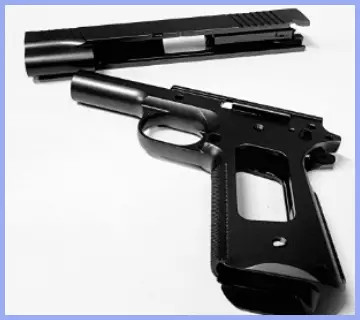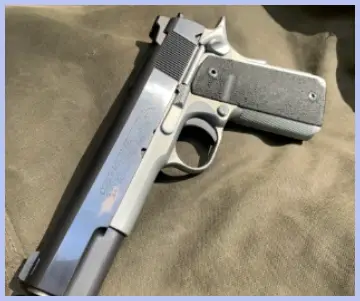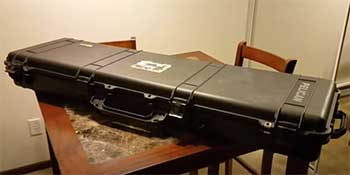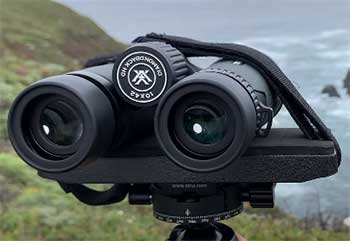I’m a 40-year-old shooter who’s coated my guns with DLC and Cerakote, and I’m here to help you choose the best for your firearm.
Both promise durability, but one’s slicker, the other’s more colorful.
After six months of testing on my Glock and AR-15, I’ll share my experience, pros, cons, and maintenance tips.
Grab these coatings from local applicators or online, and protect your gun with style or function.
Let’s figure out which one’s right for you.
Comparison Table: DLC Vs. Cerakote
| Feature | DLC (Diamond-Like Carbon) | Cerakote |
| Price | $250-$450 per barreled action | $100-$200 per firearm |
| Hardness | 2000-3000 HV | ~70 HRC |
| Thickness | 1-6 microns | 1-2 mils (25-50 microns) |
| Corrosion Resistance | Moderate, needs oiling | Excellent, high salt spray |
| Color Options | Black, FDE | Hundreds of colors |
| Application | PVD in vacuum chamber | Spray-on, oven-cured |
| Friction Coefficient | 0.1-0.2, very slick | 0.3-0.5, less slick |
| Abrasion Resistance | Outlasts Cerakote by 4500 cycles | High, but scratches easier |
| Temperature Tolerance | Up to 1100°F | Up to 1800°F |
| Common Use | Slides, bolts, BCGs | Full firearms, aesthetics |
My Experience with DLC and Cerakote

I’ve been shooting for years, and coating my firearms is a must to keep them looking sharp and running smooth.
I had my Glock 19 slide coated with DLC ($300) and my AR-15 Cerakoted in Flat Dark Earth ($150).
The DLC slide felt like butter, cycling 2000 rounds without a scratch.
Its deep black finish was sleek, but sweaty hands left fingerprints, which a quick wipe with gun oil fixed.
After a rainy range day, I spotted faint rust, but it cleaned off easily.
The thin coating didn’t mess with my Glock’s tight tolerances, keeping it reliable.
My Cerakoted AR-15 turned heads at the range with its bold FDE color.
After 1500 rounds and some rough holster draws, I noticed light scratches on the handguard, but no rust, even in mud.
The coating’s thicker layer made the action feel slightly stiff at first, but it broke in after 200 rounds.
Cerakote’s vibrant finish held up through tough conditions, but the scratches bugged me.
You’ll love DLC’s slickness for carry guns, but Cerakote’s colors make your rifle pop.
What Makes DLC and Cerakote Different
DLC, or Diamond-Like Carbon, is a high-tech coating applied in a vacuum chamber, blending diamond’s hardness with graphite’s slickness.
It’s perfect for moving parts like slides or bolts, cutting friction to a super-low 0.1-0.2.
Cerakote, a ceramic-polymer mix, sprays on and cures in an oven, offering top-notch corrosion protection and a rainbow of colors.
It’s great for full firearms, especially if you want a custom look.
DLC’s about performance; Cerakote’s about style and toughness.
You’ll pick based on function versus flair.
How They Fit Into My Routine
My DLC-coated Glock 19 is my daily carry, sliding smoothly out of my holster with no drag.
I oil it weekly to keep rust at bay, especially in humid weather.
My Cerakoted AR-15 comes out for range days and hunts, where its matte FDE blends into the brush and shrugs off dirt.
I clean it less often since it resists corrosion so well.
You’ll use DLC for guns you carry daily and Cerakote for ones you want to show off or protect in harsh conditions.
Key Features of DLC and Cerakote
DLC applies a 1-6 micron layer via Physical Vapor Deposition, hitting 2000-3000 HV hardness for insane durability.
Its slick 0.1 friction coefficient makes actions glide, but colors are limited to black or FDE.
Cerakote, a spray-on ceramic-polymer, adds a 1-2 mil layer with excellent corrosion resistance, lasting through extreme weather.
It comes in hundreds of colors for custom looks.
DLC’s thin and tough for function; Cerakote’s thicker and vibrant for aesthetics.
Both enhance your firearm, but their strengths differ.
Pros of DLC:

- Extreme hardness (2000-3000 HV): Outlasts most coatings in wear tests.
- Ultra-low friction (0.1-0.2): Makes slides and bolts cycle like a dream.
- Thin 1-6 micron layer: Keeps tight tolerances for precision firearms.
- High wear resistance: No scratches after thousands of rounds.
- Sleek black or FDE finish: Low-profile, tactical look.
- Heat tolerance up to 1100°F: Handles high-friction parts like barrels.
- Biocompatible: Safe for sensitive applications.
- Reduces carbon buildup: Keeps BCGs cleaner longer.
- Long-lasting with oiling: Stays pristine for years.
- Used in high-performance fields: Trusted in racing and firearms.
Cons of DLC:
- Pricey at $250-$450: Costs more than other coatings.
- Limited to black or FDE: Not great for custom aesthetics.
- Moderate corrosion resistance: Needs regular oiling to prevent rust.
- Complex PVD application: Requires specialized shops, longer wait.
- Shows fingerprints: Needs wiping to maintain appearance.
- Best for moving parts: Not ideal for full-firearm coating.
- Long lead times: Can take weeks to apply.
- Hard to repair: Scratches need full re-coating.
- High application temperature: May affect some metals.
- Quality varies by applicator: Inconsistent results possible.
Pros of Cerakote:

- Top-tier corrosion resistance: Handles rain, mud, and salt like a champ.
- Hundreds of color options: Perfect for custom, eye-catching looks.
- Affordable at $100-$200: Cheaper than DLC for full firearms.
- Spray-on application: Widely available, quicker turnaround.
- High chemical resistance: Resists solvents and cleaners.
- Low curing temperature: Safe for most materials.
- Coats multiple surfaces: Works on metal, plastic, even wood.
- Great for aesthetics: Vibrant, consistent finishes.
- Environmentally friendly: VOC-compliant compared to anodizing.
- Fast application: Done in days by skilled shops.
Cons of Cerakote:
- Softer than DLC (~70 HRC): Scratches more easily.
- Thicker 1-2 mil coating: Can affect tight tolerances.
- Slightly gummy action: May feel stiff until broken in.
- Needs skilled application: Poor prep leads to chipping.
- Wears with holster use: Kydex can scuff the finish.
- Higher friction (0.3-0.5): Less slick than DLC.
- Not for DIY: Requires equipment and expertise.
- Fades in extreme heat: Above 600°F for standard finishes.
- Not ideal for high-wear parts: Better for looks than function.
- Applicator skill varies: Results depend on expertise.
Maintenance Tips for DLC and Cerakote
- Oil DLC weekly: Prevents rust and keeps it slick.
- Use CLP on DLC: Cleans carbon without harming the coating.
- Wipe Cerakote with damp cloth: Removes dirt without scratching.
- Avoid abrasive cleaners: They dull Cerakote’s finish.
- Store in dry case: Protects both from moisture damage.
- Inspect DLC for rust: Oil after wet conditions.
- Touch up Cerakote scratches: Applicators can fix small nicks.
- Don’t drop coated parts: Impacts chip Cerakote.
- Check tolerances post-Cerakote: Ensure smooth action.
- Reapply oil to DLC post-cleaning: Maintains lubricity.
I oil my DLC-coated Glock slide every week with a thin layer of CLP, wiping off range grime to keep it pristine.
Rust popped up once after a damp hunt, but oil cleared it.
My Cerakoted AR-15 gets a damp cloth wipe monthly to maintain its FDE shine.
I store both guns in a dry case to block humidity.
Avoid harsh solvents on Cerakote, as they faded my buddy’s finish.
A local shop touched up a Cerakote scratch for $15.
Check DLC yearly for wear, and re-coat if needed, though mine’s still flawless.
Comparison with Other Coatings
- DLC Vs. Nitride
Nitride hardens steel to 1000-1200 HV through gas or plasma processes.
I tried a nitride-coated BCG, which was slick but not as smooth as DLC’s 0.1 friction.
It resists corrosion without oil, unlike DLC, but it’s softer and limited to steel.
Nitride’s cheaper at $100-$200, making it great for budget builds.
You’ll choose nitride for cost savings, but DLC’s harder surface and wear resistance make it better for slides or barrels under heavy use.
- DLC Vs. PVD
PVD coatings, like titanium nitride, hit 1800-2200 HV hardness.
My PVD-coated knife scratched slightly after rough use, while my DLC slide stayed perfect.
PVD offers more colors but a higher 0.3 friction coefficient.
It costs $200-$350, slightly less than DLC.
You’ll pick PVD for decorative parts with a shiny finish, but DLC’s superior durability and slickness make it the go-to for functional firearm components like bolts.
- DLC Vs. NP3+
NP3+, a nickel-PTFE blend, matches DLC’s 0.1 friction coefficient but is softer at 48-51 HRC.
My NP3+-coated bolt was slick but showed wear after 3000 rounds, unlike DLC.
It’s corrosion-resistant without oil, a plus over DLC, but costs $300-$400.
You’ll like NP3+ for internal parts where lubricity matters, but DLC’s harder surface is better for slides or barrels that see heavy wear.
- Cerakote Vs. DuraCoat
DuraCoat, a two-part chemical coating, costs $35 for enough to cover 2-4 guns.
My DuraCoated pistol wore down after 1000 holster draws, like Cerakote.
It’s DIY-friendly, air-drying without an oven, but less durable at 600°F tolerance.
You’ll choose DuraCoat for budget projects or home application, but Cerakote’s superior corrosion resistance and color options make it better for professional, long-lasting finishes.
- Cerakote Vs. Bluing
Bluing, a traditional chemical finish, costs $50-$150 but offers weak corrosion protection.
My blued revolver rusted after a wet hunt, unlike my Cerakoted AR.
Bluing wears quickly on contact points and lacks color options.
You’ll pick bluing for a classic, vintage look on older guns, but Cerakote’s durability and modern aesthetics are far better for working firearms.
Also Read: Comparison of StopBox Vs. Vaultek Gun Safe
Performance Across Use Cases
My DLC-coated Glock slide cycled flawlessly through 2000 rounds, with no wear on high-friction areas.
It needed oil in humid weather to avoid rust.
My Cerakoted AR-15 handled rain and mud without corrosion, but holster draws left light scratches.
DLC’s perfect for carry gun slides or bolts where slickness matters.
Cerakote shines for rifles or shotguns needing vibrant colors and weather resistance.
You’ll use DLC for performance, Cerakote for style and protection in tough conditions.
Application Process and Cost
DLC’s applied in a vacuum chamber, costing $250-$450 per barreled action, with 2-4 week wait times.
My Glock slide took 20 days to coat.
Cerakote’s sprayed and oven-cured, costing $100-$200, with 5-7 day turnarounds.
My AR was ready in 6 days.
DLC requires specialized shops, while Cerakote’s more accessible but needs careful prep.
You’ll pay more for DLC’s precision, but Cerakote’s quicker and budget-friendly.
Durability and Wear Resistance
DLC’s 2000-3000 HV hardness beats Cerakote’s ~70 HRC, resisting wear for thousands of rounds.
My DLC slide looked new after heavy use, while Cerakote scratched after 1500 rounds.
Cerakote’s corrosion resistance is unmatched, shrugging off rain and salt.
DLC needs oil to match that level of protection.
You’ll choose DLC for high-wear parts like slides, Cerakote for guns facing harsh environments.
Aesthetics and Customization
Cerakote’s hundreds of colors let me match my AR to my gear in FDE, turning heads at the range.
DLC’s black or FDE options are sleek but limited, better for low-profile builds.
My Cerakoted rifle stood out, while DLC’s matte finish was subtle.
You’ll go with Cerakote for bold, custom looks and DLC for understated, tactical vibes.
Who Should Choose Each Coating
DLC’s your pick if you carry daily or shoot competitions, needing slick, durable slides or bolts.
Cerakote’s ideal for hunters or collectors who want vibrant colors and corrosion resistance.
DLC’s pricier and needs oiling; Cerakote scratches easier but protects better.
You’ll decide based on whether you prioritize function or aesthetics for your firearm.
Safety and Precautions
Oil DLC parts to prevent rust, especially after wet range days.
My Glock showed faint rust once, fixed with a wipe.
Avoid abrasive cleaners on Cerakote to keep colors vibrant.
I dulled my AR’s finish with a harsh solvent once.
Store guns in a dry case to protect both coatings.
You’ll inspect regularly for chips or rust to maintain performance.
Also Read: My Thoughts On Steelwater Gun Safes
Frequently Asked Questions (FAQs)
DLC’s harder and slicker for moving parts; Cerakote’s better for corrosion resistance and colors.
Extremely durable, resisting wear for thousands of rounds with proper oiling.
DLC or NP3+ for wear resistance; Cerakote leads in corrosion protection and aesthetics.
Yes, $250-$450 per barreled action, more than Cerakote’s $100-$200.
Final Thoughts
After six months, DLC’s slickness and durability make it my choice for carry gun slides, but its cost and rust risk are drawbacks.
Cerakote’s vibrant colors and corrosion resistance are great for rifles, though it scratches easier.
You’ll find applicators online or locally, but choose DLC for function, Cerakote for style.
Match your coating to your gun’s use for the best results in your next build.

